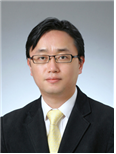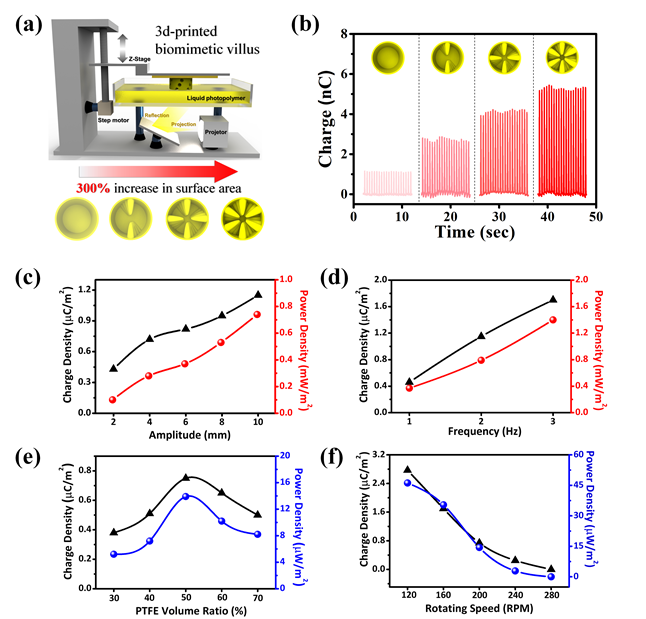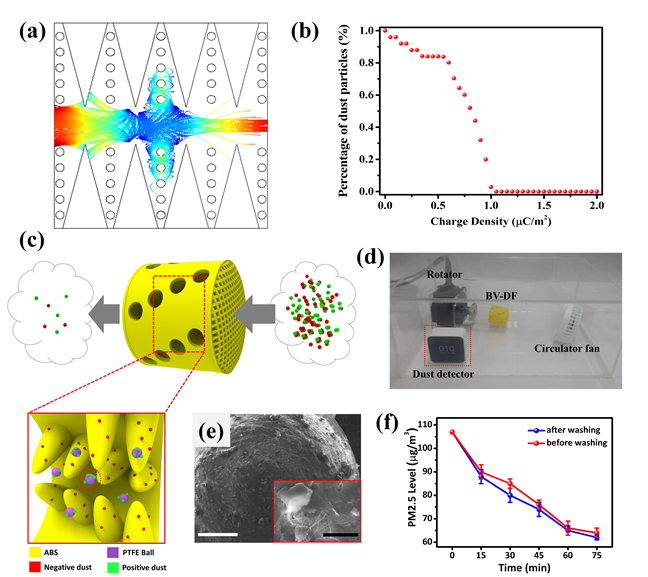
Professor Sangwoo KIM’s research team (Dept. of New Material Engineering) announced that they were able to create an energy-free, non-pressure micro dust collecting system using the 3D printer. With this achievement, we are now able to remove micro dust in our daily environment without using any sort of energy.
Micro dusts are known to be the main source of pollution in the atmosphere and has been categorized as a top grade carcinogen. There has been many researches recently to develop technology to remove micro dust but most technology incurred severe pressure loss and non-recyclable wastes. Electric filter takes too much space and energy, and also creates ozone, which is harmful to the human body.
The research team created a villus structure using the 3D printer and were successful in creating static electricity using the friction caused by wind. The static electricity can remove micro dust without pressure loss and with no energy source.

[Figure 1] evaluation of the static electricity based filter system
The electric-charged medium inside the material acts as the collector with the friction caused by the wind. It creates nearly zero pressure loss unlike the discharger method used by high voltage.
The filter created by the research team can remove micro dusts in nanometer sizes and can greatly increase the energy efficiency of the circulation system. It can also be reused after simple cleaning; creating no waste.
Prof. KIM said, “We developed a smart filter that overcame the limits of previous filters. The new filters can be used in clean rooms, air filters in electric vehicles, domestic ventilation systems and masks.”
This research was conducted as a project sponsored by Ministry of Science, ICT and Future Planning, National Research Foundation of Korea and Korea Research Institute of Chemical Technology. It was published online in the world renowned journal “Nano Energy”.

[Figure 2] friction static electricity based filter















